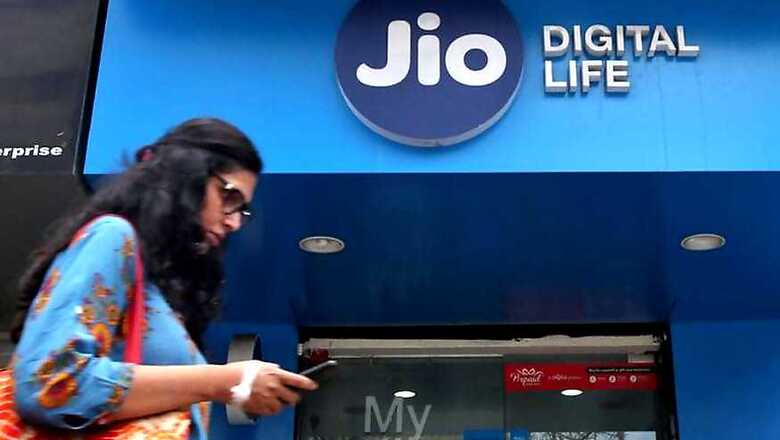
views
New Delhi: Telecom and retail, the two consumer facing businesses of India’s largest and most valuable private sector enterprise, Reliance Industries, will continue to see large investments in the coming years even as the hydrocarbon business continues simultaneous growth.
RIL has been subtly changing its earnings profile by focusing on the new-age consumer facing businesses and how. So from a mere 2% of margins of RIL coming from these consumer businesses till year before last, their contribution within just one year shot up to 13% last fiscal.
A considerable credit for this rapid and massive change must go the telecom venture, which was started less than 24 months back. Reliance Jio Infocomm has notched up several global firsts in terms of customer base and service standards. And its imminent entry into the fixed line broadband market could well accelerate growth further.
Speaking at the AGM on Thursday morning, RIL Chairman Mukesh Ambani said an optical fiber based fixed-line broadband is the future, it offers hundreds of megabits per second of data speeds and will allow RIL to offer smart home solutions besides also creating value for small merchants.
Analysts welcomed this move since the broadband market right now is “under penetrated” and RJio’s arrival will shake things up, for sure. The devil, however, will be in the pricing detail though the service will start rolling out from August 15.
In a note to clients, brokerage Morgan Stanley said broadband penetration in India is just 7% (of which fibre penetration is less than 0.5%) of households, compared to 85% in China as of December 2017. This presents unmatched opportunity to RJio.
“We think rising data usage with growing digital content presents a significant opportunity for broadband players in the space. Our industry discussions indicate 20% of the households are ready to consume fibre offerings and this is expected to grow to 35% of households over the next 3-5 years. For top FTTH providers, average ARPU (Average Revenue per user) is Rs 650 per month.
RJio plans to launch FTTH services over next few months and has initiated beta trials in a few locations. It has rolled out 400K RKm of fibre and is expanding the footprint. In addition, it intends to enter the enterprise segment with connectivity as well as business solutions around the same,” the Morgan Stanley analysts said.
Analysts at brokerage Motilal Oswal said that RJio’s focus is currently on FTTH but it would later shift to enterprise business. RJio has 270,000 sites, broadband coverage will require 1-2 years for completion and Jio has more than 10 petabytes capacity already which is expected to double in two years. Competitor Bharti Airtel has 30% of its sites fiberised, has five petabytes capacity and is expected to reach just seven petabytes in a year.
What RJio is vying for is the market where fiber connectivity reaches your doorstep and that of merchants, small and medium enterprises and large enterprises across 1,100 cities. For the home. This means ultra HD entertainment, multi-party video conferencing, voice activated virtual assistants, digital shopping. Then devices like security cameras, home appliances, even lights and switches, can be securely controlled by using a smartphone from both inside and outside the home. Such connectivity could also redefine 24X7 emergency help at home for the ill. For merchants and small businesses this means much better customer servicing and competition with large businesses.
Whether RJio succeeds in the FTTH business like it has succeeded in the mobile telephony business will depend on tariffs and the amount of investment it is willing to sink in to make it work. It will surely disrupt the market, where significant players like Hathaway, DEN Networks, Airtel and Dish TV currently operate.
Meanwhile the existing mobile telephony business of RJio has also reported robust growth. Remember, despite being in the business for less than 24 months, RJio already accounts for a fifth of the mobile telephony market revenue share in the March quarter of 2017-18.
In one year, customer base has doubled to over 215 million; data usage has almost doubled too, to 240 crore GBs per month while voice usage has more than doubled to 530 crore minutes per day. RJio is already number one operator in 5 circles in terms of revenue, these circles contribute 17% of its revenue and 12% of industry revenue. The 13 circles, where RJio is second, contribute almost two-thirds to industry revenue.
The launch of the next gen JioPhone at affordable rates, announced on Thursday, would likely accelerate the jump from feature phones to smart phones for a large section of the population and in the process, surely help RJio’s finances further.
(The author is a senior journalist. Views are personal.)



















Comments
0 comment